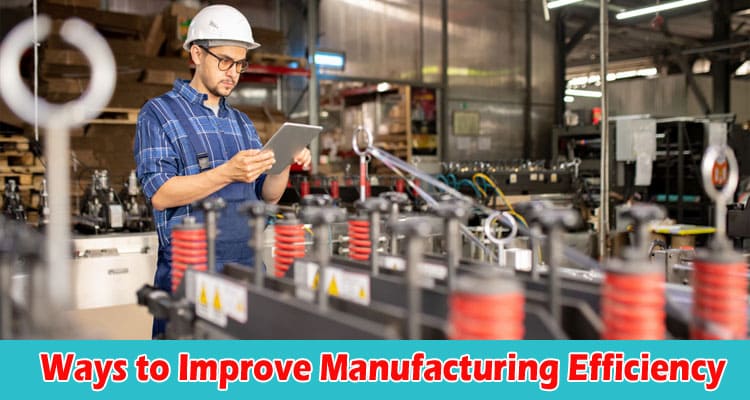For a manufacturer, one of the most important factors in achieving success is having efficient processes. An efficient process can help reduce costs, increase productivity and quality, and ultimately improve your bottom line. From installing world-class modular conveyor systems to using the latest technology and software solutions, improving your manufacturing process can have a huge impact on your business. Here are some key ways to increase efficiency in the manufacturing process.
1. Automation
Automation can drastically reduce the amount of manual labor needed in production and result in faster, more efficient operations. It also reduces errors caused by human error, ensuring a higher quality output with fewer defects. Automation frees up resources to allow production teams to focus on more complex tasks, such as product design and development. For instance, robotic arms can be programmed to perform a variety of repetitive tasks, from painting and welding to assembly or packaging.
There’re many areas where automation can be adopted to improve efficiency, such as data tracking and analysis. Automated systems allow for real-time data gathering and monitoring, which provides key insights into production performance and helps identify areas of improvement or optimization.
2. Lean Manufacturing
Lean manufacturing is a process-focused approach to improving efficiency through the elimination of waste from production processes. The goal is to reduce the amount of time, material, and energy needed to produce a product or service.
Lean manufacturing can be used in almost any type of production environment, from fabrication to assembly lines. It requires careful planning with teams working together to identify areas that could be improved by streamlining processes or eliminating unnecessary steps. Implementing lean manufacturing can involve reorganizing workspaces, incorporating new technologies, and training employees on how to best use their resources.
3. Quality Control
Quality control is an essential part of any successful manufacturing operation. It ensures that products meet the required standards and are defect-free before they’re shipped out to customers. Quality control also helps to reduce costs by preventing defective products from being produced in the first place.
Having an effective quality control system in place is essential for improving efficiency. It should include regular inspections and testing of materials, processes, and finished products so that any issues can be identified and addressed quickly. Automated testing systems can also be used to monitor production performance and detect any inconsistencies.
4. Just-in-Time Manufacturing
Just-in-time (JIT) manufacturing is an approach to production that focuses on reducing the amount of inventory held and instead producing just what’s needed when it’s needed. This helps to reduce costs associated with storing, moving, and managing excess inventory.
JIT manufacturing requires careful planning and collaboration between departments to ensure that all materials are available when needed. It also involves using automated production systems, such as robots and 3D printers, to quickly produce items without the need for manual labor. Implementing JIT manufacturing can help reduce costs and improve production efficiency.
5. Regular Maintenance & Repair
Regular maintenance and repair of production equipment is essential for ensuring optimal performance. Equipment that isn’t maintained properly can lead to breakdowns or delays in production, resulting in lower efficiency and increased costs.
Manufacturers should have a system in place to regularly inspect and maintain their equipment. This should include preventive maintenance tasks such as lubrication, cleaning, and checking for signs of wear or damage. It should also include more intensive repairs when necessary to ensure that all equipment is functioning properly.
6. Employee Training
Having well-trained and knowledgeable employees is essential for improving manufacturing efficiency. Employees who are familiar with the processes and equipment used in production can help identify areas for improvement and suggest solutions to any problems that arise. Regular training should be provided to ensure that all employees are up-to-date on the latest technologies and techniques being used in the industry. Training should also focus on safety and quality control to ensure that all processes are being carried out correctly and efficiently.
By investing in employee training, manufacturers can improve their efficiency and save time and money in the long run. Have a plan in place to provide regular training and review sessions to ensure that all employees are up-to-date with the latest industry practices. You can also consider offering incentives for employees who exceed expectations and demonstrate a commitment to learning.
Final Thoughts
Manufacturing business is usually complex and can involve many different processes. By implementing all the strategies outlined in this article, you’ll not only be able to improve the efficiency of your manufacturing processes but also enjoy increased profits and a better reputation within the industry.
The key is to keep experimenting with different approaches and focus on consistent improvement. Just remember that there’s no such thing as overnight success when it comes to improving efficiency in any kind of business. With dedication and hard work, you can make your manufacturing operations more efficient, enhance your competitive edge, and increase your business bottom line.







